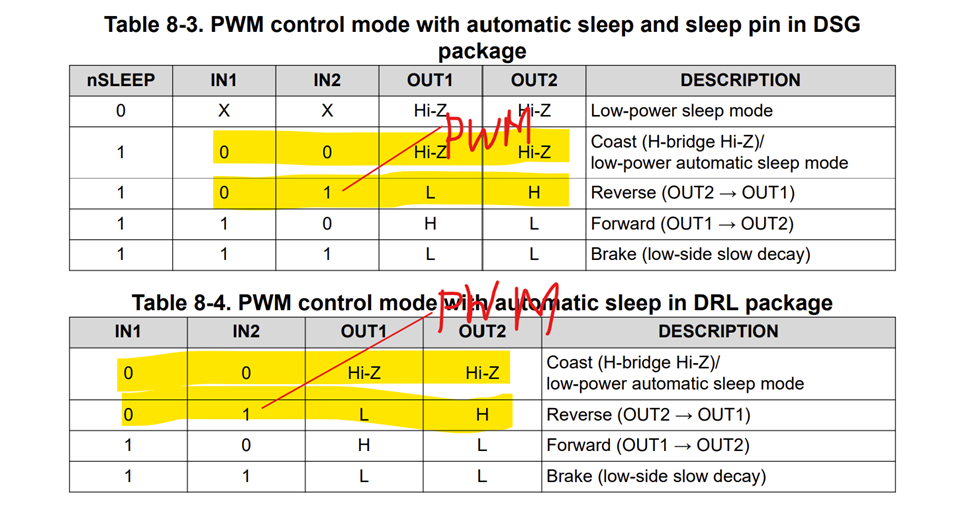Other Parts Discussed in Thread: DRV8220
Tool/software:
I'm just looking for a simple and fast way to drive some piezos using an H-Bridge strictly for the purposes of testing. Is there any reason this EVM can't be used for this purpose?
Thanks!
Tool/software:
I'm just looking for a simple and fast way to drive some piezos using an H-Bridge strictly for the purposes of testing. Is there any reason this EVM can't be used for this purpose?
Thanks!
Hi Phillip,
As long as the operating voltage range 4.5V to 18V suits your requirement it should be fine. You may want to provide PWM input suitable for the piezo you'll be testing by removing the 0ohms jumper resistors and giving PWM inputs to EN/IN1 and/or PH/IN2. The onboard MCU may be driving with 20kHz PWM. If you know how to reprogram the onboard MSP430 you can write your program as well. The source code of the EVM with TI CCS project can be downloaded from the EVM webpage, https://dr-download.ti.com/software-development/support-software/MD-sz4pD1dST9/01.00.00.00/sloc368.zip.

Regards, Murugavel
Thanks Murugavel.
I don't have the means to reprogram the MSP, so I'll be using an external controller to drive the IN1/IN2 pins. I prefer not to have to use a complementary PWM output on the controller to drive both inputs. Would there be any issues with:
1. Configuring the DRV8220 to PH/EN mode (drive the Mode pin high).
2. Driving the IN2/EN pin statically high (when sound generation is required).
3. Applying the PWM signal to IN1/PH.
This is different than what is described in the datasheet, but from what I can tell, it should drive current back and forth through the piezo (getting it to deflect in both direction and more efficiently generate sound).
Hi Philip,
You could do that. In PH/EN mode, IN2/PH should be used for direction change with motors - a static input LOW or HIGH. IN1/EN should be the PWM input. This is recommended to ensure current recirculation during PWM off for a BDC motor. A piezo would not require current recirculation typically as it will be a capacitive type of load.
You could do the same in PWM mode as well. 50% PWM should be used for driving a piezo. PWM mode requires one input to be static. It does not require complementary PWM inputs.

If slow decay is desired you could use the drive logic to alternate between drive during PWM on and slow decay during PWM off. Either should work fine. You can certainly experiment with which one would be the best fit.
Regards, Murugavel